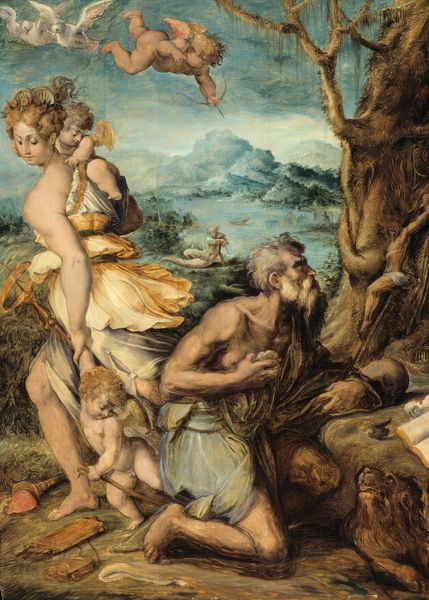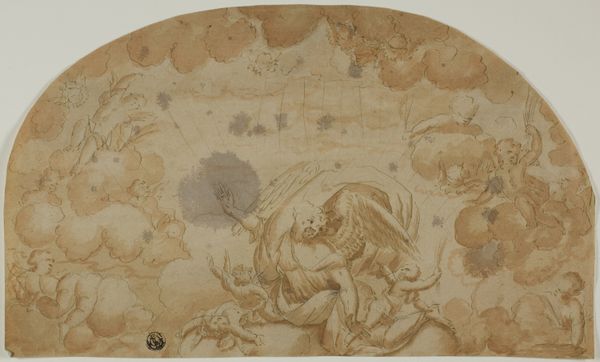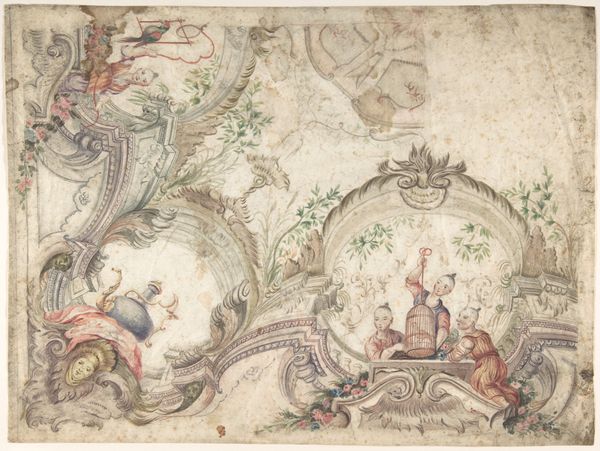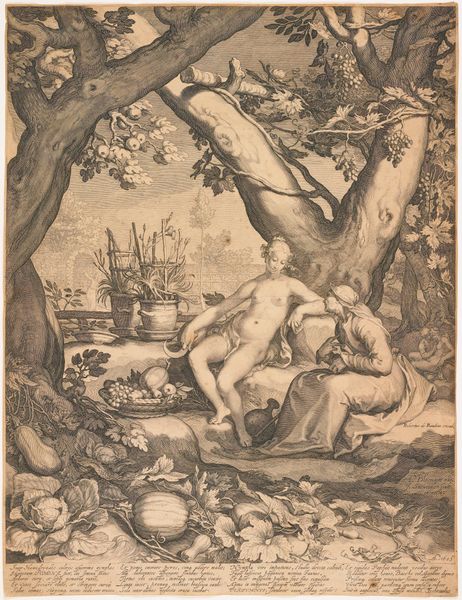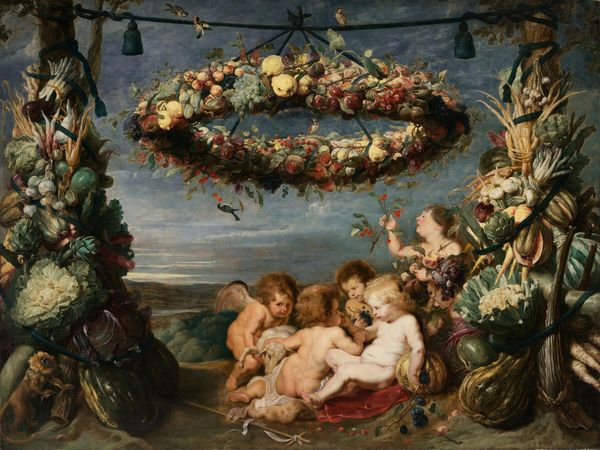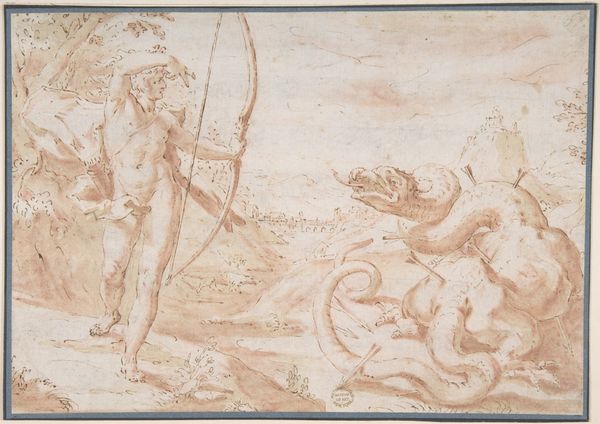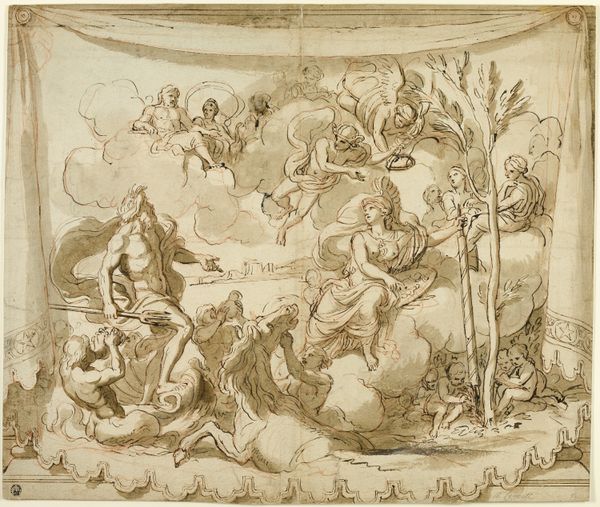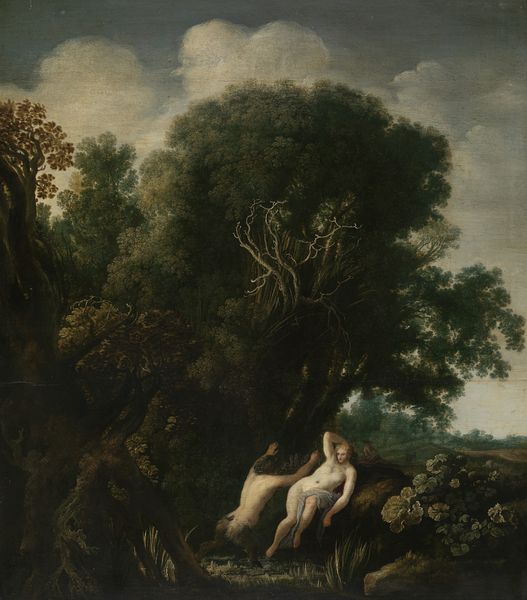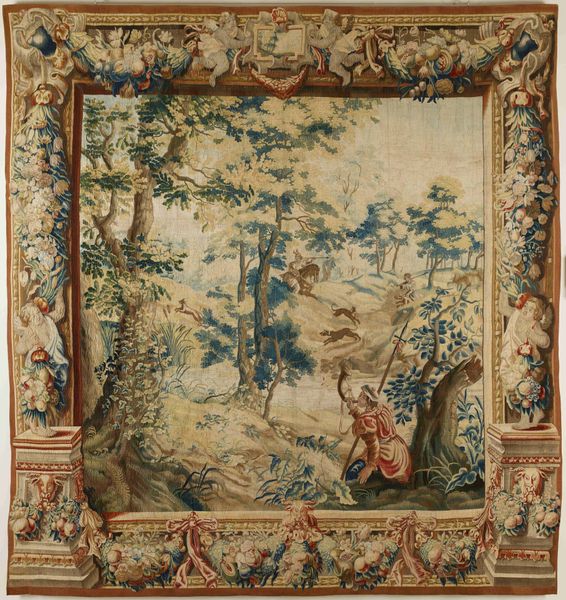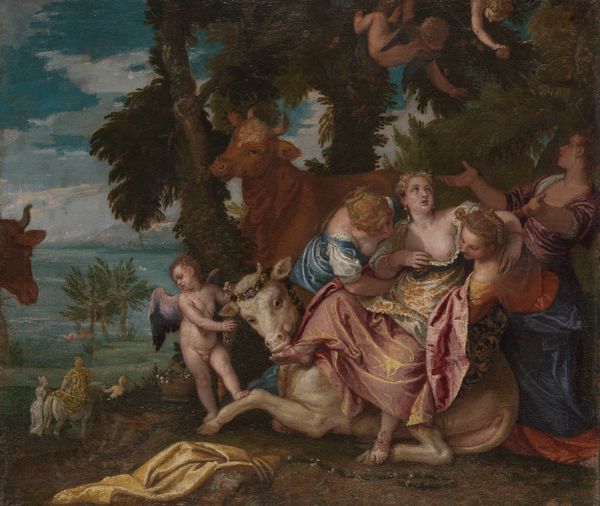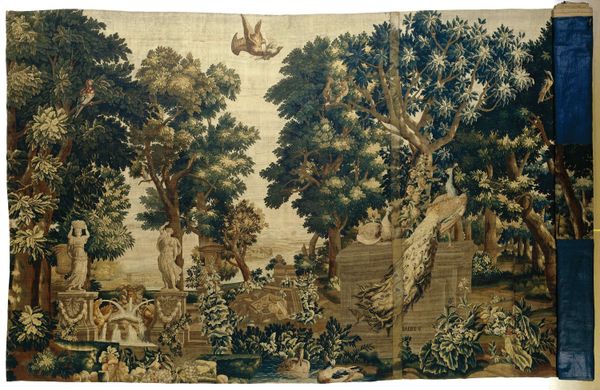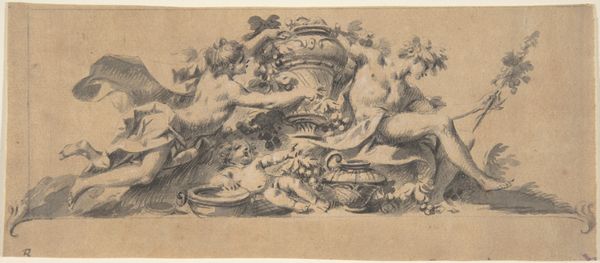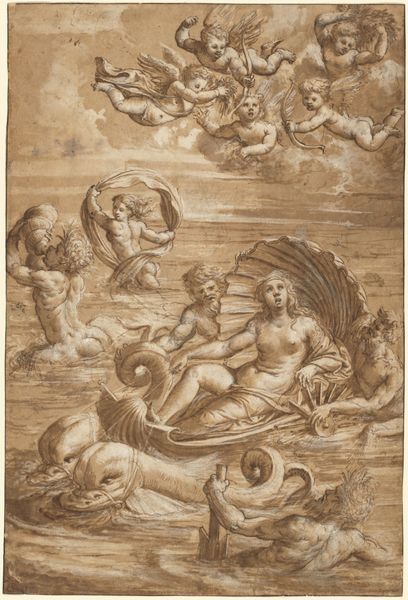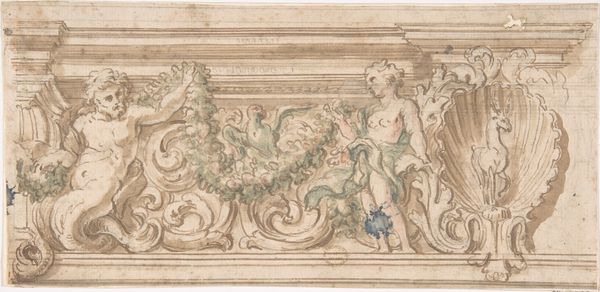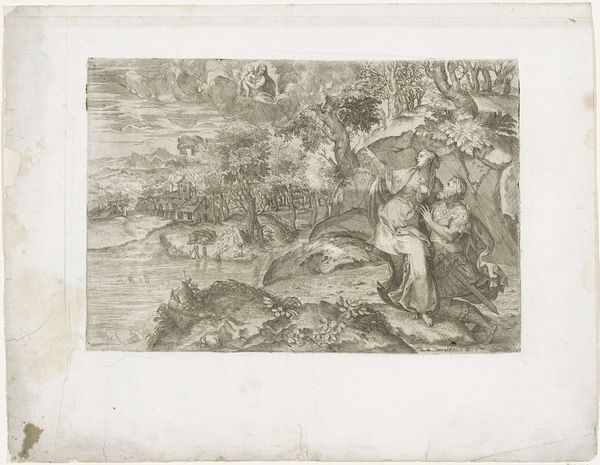
"Venus disarming Amor" in a medallion surrounded by plants, fruits, insects and shellfish 1593 - 1597
0:00
0:00
drawing, gouache, watercolor
#
gouache
#
drawing
#
water colours
#
allegory
#
gouache
#
mannerism
#
11_renaissance
#
oil painting
#
watercolor
#
miniature
Dimensions: 162 mm (height) x 217 mm (width) (billedmaal)
Editor: This is Joris Hoefnagel’s “Venus disarming Amor” in a medallion, painted between 1593 and 1597 using watercolor and gouache. What strikes me is how the central scene, almost classical, is overwhelmed by the meticulous rendering of these natural specimens—fruits, insects, even shellfish. What do you see in this piece, beyond its obvious Mannerist style? Curator: Let's consider the formal arrangement first. The oval medallion containing the Venus and Cupid myth offers a moment of idealized beauty, rendered with delicate precision, against the density and almost overwhelming detail of the surrounding natural elements. Notice how the textures—the smooth skin of the figures versus the rough surfaces of the fruits and insects—create a dynamic tension. Editor: So, it’s about contrasting textures and forms, but what about the meaning generated by that contrast? Is Hoefnagel making a statement through these elements? Curator: Indeed. Think of the meticulous detail applied to each insect, each piece of fruit. The work invites close looking, rewarding careful observation of line, form, and color. Each element seems self-contained, yet part of a larger composition. The framing inscription reinforces the symbolic relation among these three elements, which have an "elective affinity." How does the inscription impact your understanding? Editor: Now I see it: each element contributes to the overall balance and compositional dynamism. Together, they exemplify nature's artistry. Curator: Precisely. Ultimately, what this exercise underscores is the formal complexity that creates new perspectives on this early example of the Renaissance. Editor: This close reading really illuminated the complex, balanced structure of Hoefnagel’s composition. It made me appreciate how deliberate his artistic choices were!
Comments
statensmuseumforkunst almost 2 years ago
⋮
Joris Hoefnagel is one of the most important Northern European artists from the second half of the 16th century. Back in his own day, his fame rested on manuscript illuminations and cabinet miniatures (such as this); his work was amongst the most exquisite created in his day. The picture shows a strange mixture of motifs that do not make sense to modernday audiences, but which would have been decipherable to scholars from the artist's own time. Even so, we can make some progress towards understanding the images. The medallion's subject matter and inscription "Plus aloes quam mellis habent" (They contain more bitterness than sweetness) is a reference to how earthly love (the arrows of Amor/Cupid) always end up bringing pain even if it begins sweetly; a familiar moral lesson at the time. The inscription at the bottom, "Quatuor in rerum natura elementa" (the four elements of Nature) explains the flowers and fruits (which symbolise earth), butterflies (air), the other insects (fire), and the lobster (water). But we no longer know the significance of placing "The Four Elements" and "Venus Disarming Amor" within the same context. The knowledge that was active during the 16th century - and which was very much about how all of Creation was intervowen in a web of interconnected meanings - has largely been lost now. We can no longer "see" these overall connections, the vast intervowen fabric that made sense to people, at least to scholars, at that time.
Join the conversation
Join millions of artists and users on Artera today and experience the ultimate creative platform.
